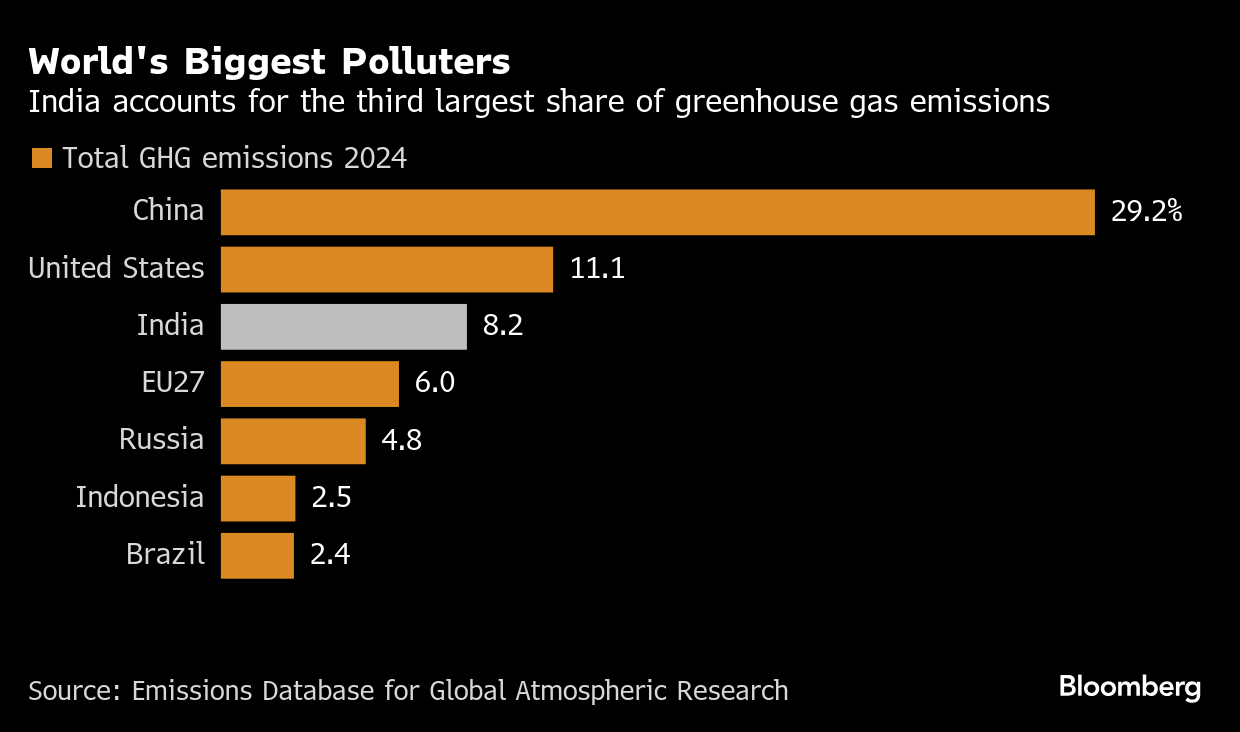India Draft Plan Reveals $21 Trillion Net Zero Investment Need
(Bloomberg) -- India will need as much as $21 trillion to achieve its climate goals and lift its population out of poverty, according to a draft government plan seen by Bloomberg.
The estimate offers a first glimpse of how the country intends to live up to its target of net zero emissions by 2070. The updated scenario implies hitting peak emissions in 2045, which is a decade earlier than the current trajectory.
A senior official with Niti Aayog, the government’s top think tank which drafted the plan, didn’t respond to a request for comment.
India is already being severely battered by the fallout of climate change, as deadly floods and heat waves become more destructive each year. But the need to mitigate the emissions that feed climate change has historically been at odds with India’s priorities of economic growth and energy security, with the latter still mostly provided through coal.

The new plan shows India will seek to achieve climate and economic development goals simultaneously, with low-carbon options envisaged for much of its yet-to-be-built residential and industrial infrastructure.
By 2070, the floor space of India’s buildings will have more than doubled, and its roads will need to support up to 190 cars per 1,000 people compared with 32 today. At the same time, energy supply will grow from 870 million tons of oil equivalent (mtoe) in 2020 to 2250 mtoe in 2070 under a net zero scenario.
The government now sees renewables supplying 65% of its total energy mix by 2070, with nuclear accounting for 11%. Coal would provide just 4%, down from 49% in 2020.
If the country stays on its current trajectory, coal’s share would still make up close to 30% of the overall mix, while renewables would account for roughly a third in 2070.
Much of the planned progress in decarbonizing India’s economy relies on technologies that are still under development, and whose viability in India remains uncertain. Nuclear installations, for example, will need to reach as much as 300 gigawatts, compared with less than 9 gigawatts today.
“The cost of power from nuclear plants is still unknown, but I don’t expect regulators to approve plants with high price tariffs,” said Neshwin Rodrigues, senior Asia energy analyst with the think tank Ember. Regardless of climate targets, the country is expected to build out a huge amount of solar and wind power, alongside batteries. “India will rely heavily on electrification,” he said.
The draft plan also assumes a widespread industrial use of carbon capture technology, something that is yet to be tested in the country and has had limited success globally.
All countries are expected to submit climate plans stretching into 2035 at the United Nations climate summit, COP30, due to start in Brazil next month. China has said it expects to reduce emissions by as much as 10% from its peak by 2035. India has yet to submit its own plans to the UN.
©2025 Bloomberg L.P.





